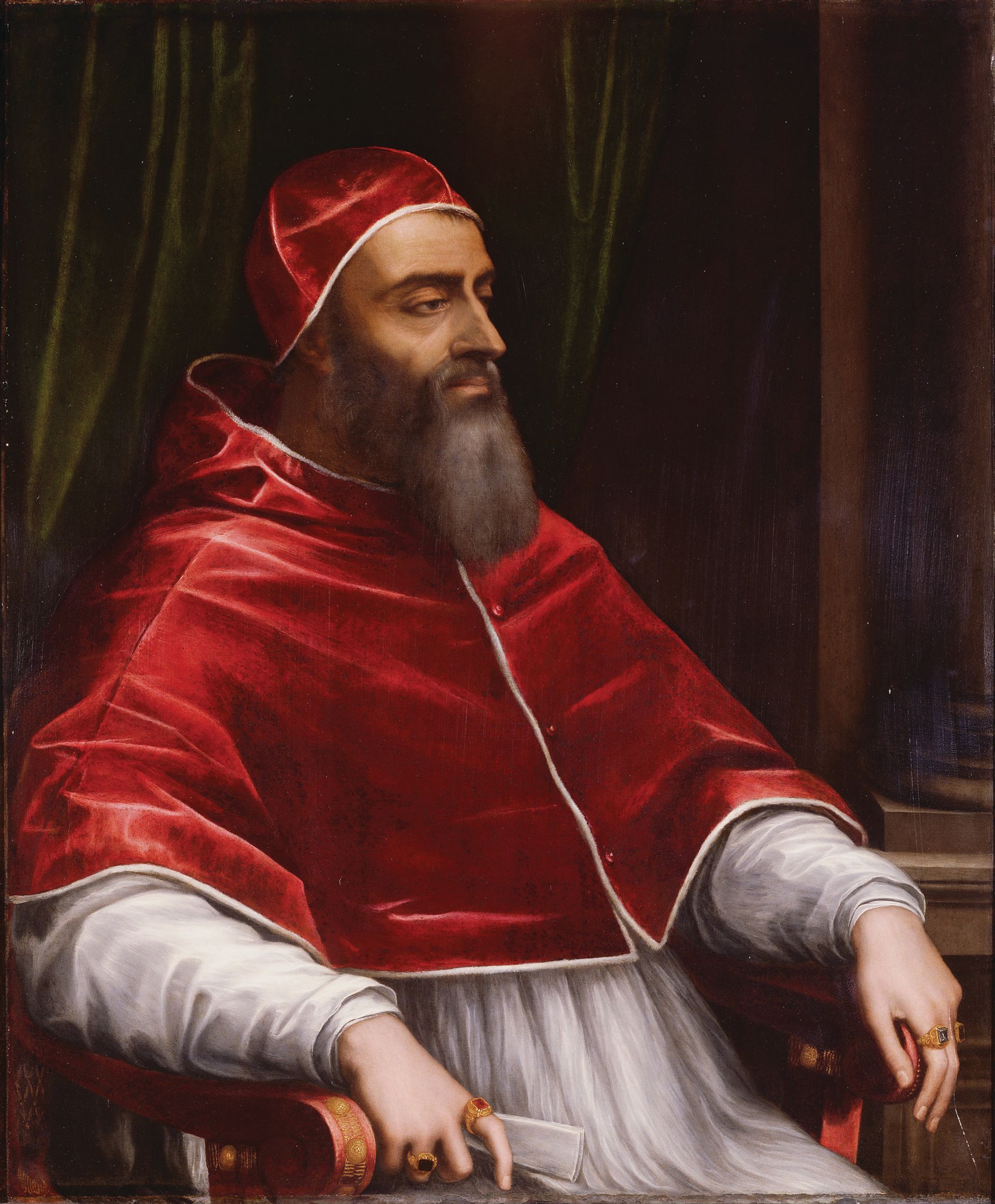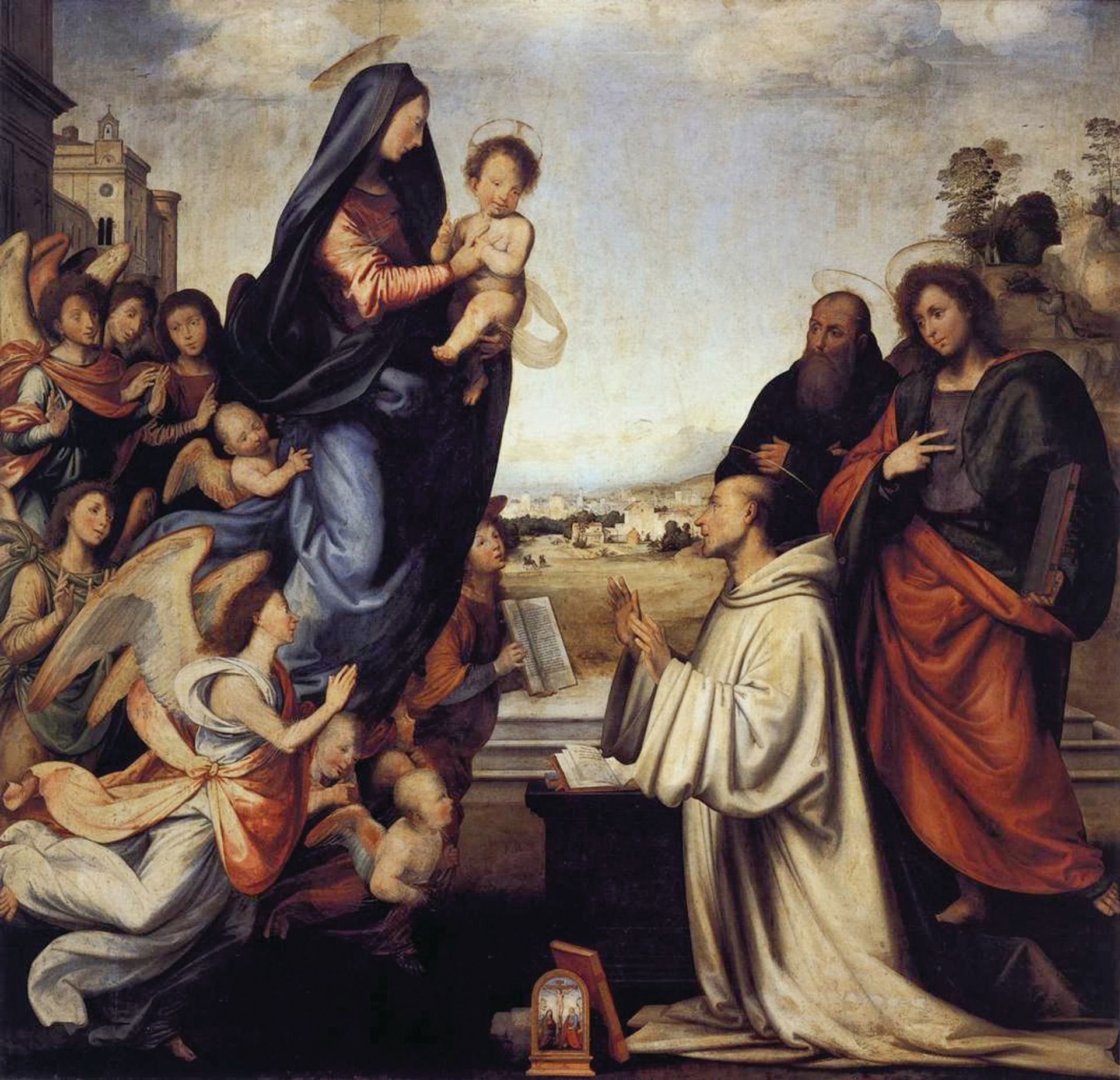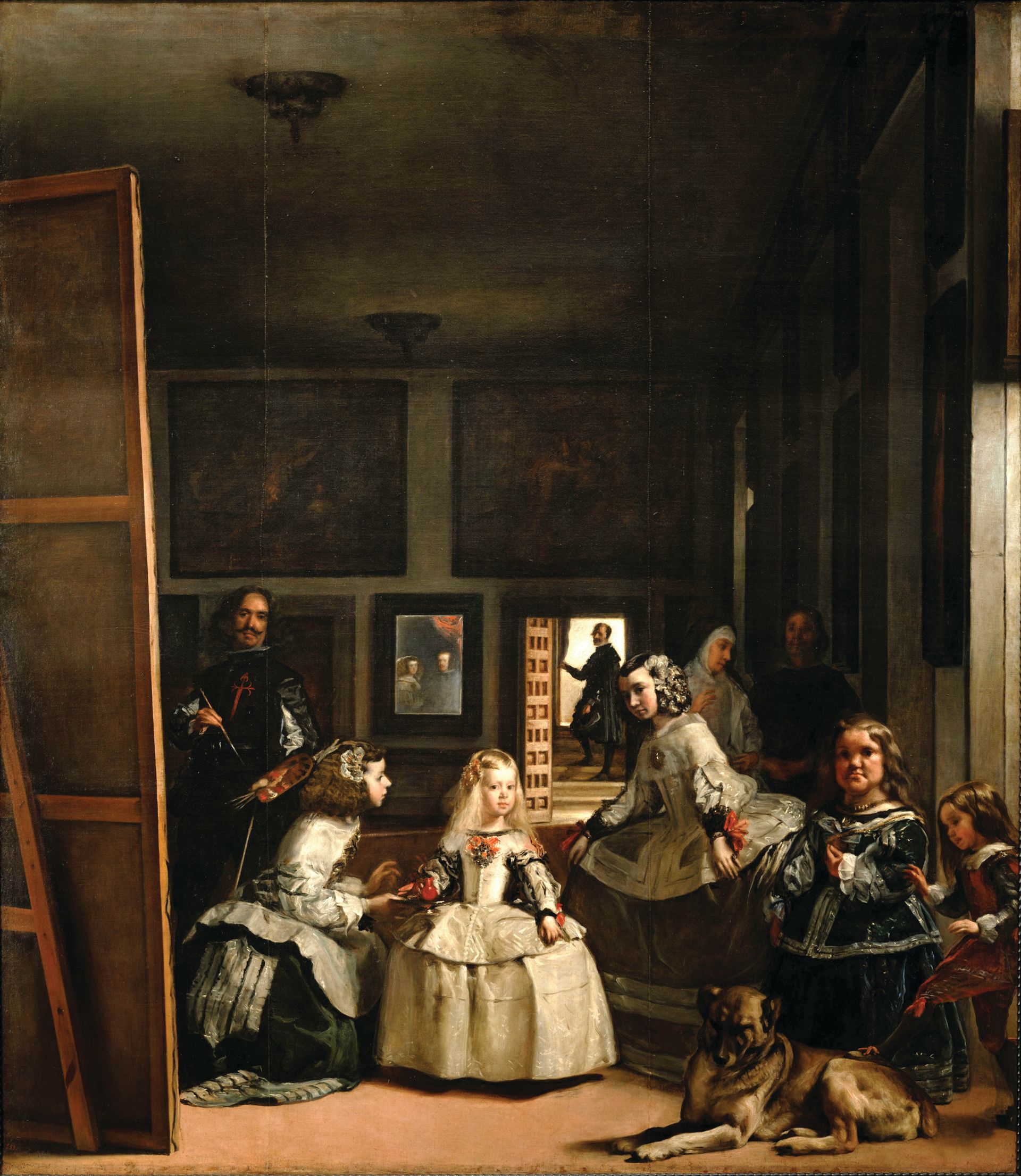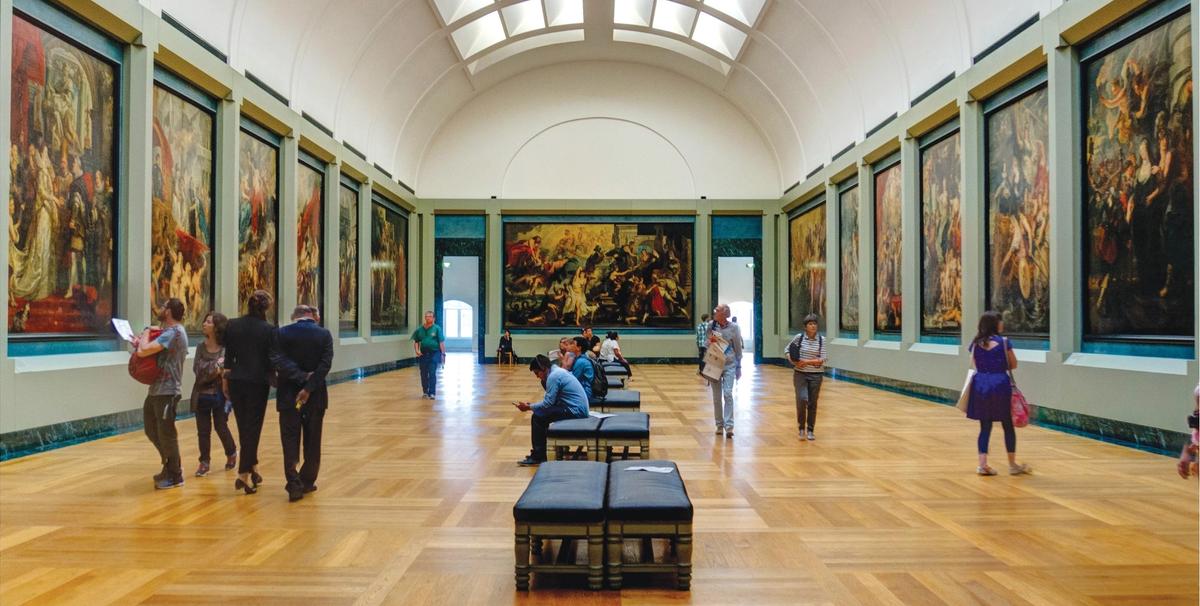Sebastiano del Piombo (around 1485-1547) was made piombatore, or keeper of the papal seal, in 1531, for his many years’ service to the papacy and continuing loyalty to Pope Clement VII. It is this role that gave him his sobriquet—his family name was Luciani. But in Lives of the Artists, Vasari claimed that the honour ended a great career: “Art suffered no great loss in [Sebastiano’s] death,” he wrote, “seeing that, as soon as he assumed the habit of Friar of the Piombo, he might have been numbered among those lost to her.”
Clement had bestowed “too rich a reward” on Sebastiano, who “laboured continually while he was living in poor circumstances and the rivalry between him and Raffaello da Urbino lasted, [but] he did quite the opposite when he had enough for his contentment”, Vasari wrote.

Vasari’s view was informed by an embittered Michelangelo who had turned against his old friend—this is the sad turn of events at the end of the National Gallery’s exhibition Michelangelo & Sebastiano, opening this month, which is otherwise a story of collaboration and mutual admiration. But Michelangelo and Vasari’s attack on Sebastiano addresses an enduringly fascinating aspect of Old Masters’ stories: many of them juggled their work in studios with responsibilities to courts and brotherhoods. The ways in which artists in the Renaissance and Baroque periods managed these competing forces in terms of their work were hugely diverse. But they remind us that the romantic idea of the artist—a figure working alone, dedicated entirely to their craft and straining with every sinew to develop it—is unrecognisable in the early modern period.
The finest fratazo in Rome Was laziness and financial comfort the reason for Sebastiano’s plummeting productivity in his final decade? In the role of piombatore, he would use the leaden papal seal, or piombo, to stamp briefs from the Apostolic Chamber, the papal treasury. The role gave Sebastiano an annuity of 800 ducats. In a letter to Michelangelo in November 1531, he writes joyfully of his new honour. “Our Lord Pope Clement appointed me as piombatore, and he made me a friar to replace Fra Mariano [Fetti, the previous piombatore]. If you saw me dressed as a friar, I am sure it would make you laugh. I am the finest fratazo [friar-lad] in Rome: something I would never have expected to happen.” He also gives the impression that the role interrupts his painting. “Forgive me if I still have not finished the Pope’s head, but I hope to send it next week in any case,” he writes. “The duties of this office [of piombatore] prevented me.”
But Matthias Wivel, the curator of Michelangelo & Sebastiano, is doubtful that the role kept him from his art. “He did have some official commitments, but I don’t think they were very onerous,” he says. “He did travel with the Pope and he had to perform certain functions. So I am unsure how much it would have interfered with his work as a painter. The thing is, the previous holder of that particular role [Fra Mariano] was Leo X’s clown, of whom he was very fond. It was sort of an honorific rather than a full-on practical role.” As Wivel says, “It doesn’t seem like [Michelangelo and Vasari] are cutting him any slack for having to perform other functions. But then you can’t trust what they’re saying.” Why not? “Obviously, Michelangelo was pissed off with Sebastiano about something. And it probably has to do with The Last Judgement.” Vasari reports that the artists had fallen out over the technique for the Sistine Chapel mural. Sebastiano convinced Pope Paul III that it should be done in oil against his friend’s will; Michelangelo rejected the idea on the grounds that it was a technique for “women and idle and lazy people like Fra Bastiano”. Wivel suggests that Michelangelo may have “entertained Sebastiano’s idea to paint it in oil and tried to do it and decided against it, and then got angry.” He adds that any suggestions as to the full story behind the falling out are speculation.
But he agrees that Sebastiano produced little after becoming piombatore. “He didn’t finish anything. Vasari was not wrong that he was unproductive,” he says. His last documented painting is a Pietá in Ubeda, Spain, begun in 1531 or 1532 but delivered in 1539; his final collaboration with Michelangelo, as it is based on his drawings. “My sense is that after the break with Michelangelo he hardly painted anything,” Wivel says.
Wivel adds that Sebastiano’s “touching quote” explaining his inactivity, reported by Vasari, “rings true” with the artist’s sensitive, self-critical personality, though Vasari may have embellished the quote to suit the laziness agenda. Sebastiano said: “here are now in the world men of genius who do in two months what I used to do in two years; and I believe that if I live long enough, and not so long, either, I shall find that everything has been painted. And since these stalwarts can do so much, it is well that there should also be one who does nothing, to the end that they have more to do.”
Manual craft to liberal art
While he had notionally become Fra Bastiano, Sebastiano’s later-life struggles bear little relation to the difficulties faced by numerous distinguished artist-monks in balancing official and artistic duties. Take Fra Bartolommeo (1472-1517), also known as Baccio, who as a young artist even gave up painting to take the habit, after his mentor, Fra Girolamo Savonarola, the puritanical Dominican preacher and sometime ruler of Florence in the 1490s, was arrested and later burned at the stake.

Vasari reports that Fra Bartolommeo lived at the convent in Prato outside Florence from 1500, and gave his attention “to nothing save the divine offices and the duties of his Rule”. Fra Bartolommeo may have been required to stop painting for the first year of his novitiate, but he “refused to touch a brush” for more than four. Scholars dispute what drove his return to painting: a new, art-loving prior at San Marco may have urged him to honour his great talents in the service of God (not to mention the financial health of the monastery). Whatever his motivations, happily Fra Bartolommeo became a prolific friar-artist until his death, achieving an elegance and harmony that rival the earlier great monk-painter, Fra Angelico.

A century after Sebastiano and Fra Bartolommeo, artists’ position in society had changed hugely. Michelangelo and Titian, among others, had facilitated what the art historian Jonathan Brown describes as a “conceptual transformation of painting from a manual craft to a liberal art”. If painters were becoming princes, none was more princely than Peter Paul Rubens (1577-1640), the most famous moonlighting painter. His diplomacy in England and France on behalf of the Spanish Netherlands (now Belgium) and Spain itself was achieved in the 1620s, when he also reached great artistic heights, such as the Marie de’ Medici Cycle for the Luxembourg Palace in Paris (now in the Louvre).
In 1634, as the Belgian academic Michael Auwers details in his recent study The Gift of Rubens, the great artist himself boasted of his skills: “I carried out negotiations of the gravest importance, to the complete satisfaction of those who sent me and of the opposite party.” But Rubens’s appeal as a diplomat, and a gentleman, emerged precisely from his ability as an artist, as his experience in England shows. In 1627, Philip IV had written to Isabella, the governess of the Spanish Netherlands, to say that the involvement of Rubens, her court painter, in diplomacy with England was a “great discredit to this monarchy”. But by 1629, he had dispatched Rubens on a mission to London. The Spanish court had concluded that “because of [Rubens’s] personal qualities, his civilised behaviour and his intelligence, and his profession as a painter, [King Charles I] being a great aficionado of paintings, he could secure himself of a degree of access that could serve [Philip IV] very well”.
Rubens, the artist-diplomat Auwers argues compellingly that Rubens was sent as a gift from the Spanish monarchy to the Caroline court: he had no diplomatic accreditation and his presence confounded courtiers and diplomats in England. But he immediately made an impression on Charles, who had long admired Rubens as an artist, buying his self-portrait years earlier.
Rubens was in London as an artist first and a diplomat second, but because of his reputation, he was able to make greater inroads than a conventional envoy. A pro-Spanish courtier in London wrote of Rubens: “Not only he is very capable and skilful in negotiating, but he also succeeds in appealing to everyone and especially to the King my lord.” Through his very presence, as well as the creation of strategic paintings such as the National Gallery’s Minerva Protects Pax from Mars (1629-30), an allegory of peace given to Charles, Rubens aided the Spanish cause in obliging the English king to develop an accommodating attitude to Spain, and a desire to heal the monarchies’ differences. The ceiling of Banqueting House in London, glorifying Charles’s Stuart dynasty, was made after Rubens had returned, and retired, to Antwerp in the 1630s.
“Art already had a diplomatic importance, but Rubens, thanks to the special European environment, was able to elevate art to a next step,” says Arturo Galansino, the director of the Palazzo Strozzi in Florence, and the curator of the Royal Academy’s Rubens exhibition in 2015, “And what is incredible is how Rubens was able to do it, using these special effects. He was, for sure, the inventor of the international Baroque. He was to create a pictorial language recognised through an entire continent... It was the official visual language of a political generation.”
Crucial to Rubens’s ability to play his dual roles was his supremely efficient workshop. Galansino likens it to the factory-studios of 21st-century artists. “The figure of Rubens challenges our Romantic and post-Romantic prejudice of authorship and is something that makes us reconsider brands, labels, signatures,” he says. “What is important for the art of that time, and still for contemporary art today, was the idea—and Rubens had ideas. He had, first of all, imagery: a repertory of drawings, used and re-used many times; a great talent in composition, using these ideas in many ways and in many dimensions. And then, in the organisation of the workshops, he assigned the tasks to different artists or groups of artists. He is similar to a movie director in this way.”

In the 1620s, when he was a young court painter in Madrid, Diego Velázquez met Rubens just before his mission to England. Seeing this great artist, collector, diplomat and humanist up close brought to life “the ideal of the artist-courtier” for Velázquez and provided him “with a model to emulate”, according to Jonathan Brown. For Velázquez, painting “was the path that led upwards to his desired conquest of being regarded as a gentleman”, Brown argues. “And as he gained offices, so his responsibilities outside the realm of painting became greater and greater. And it culminates in his appointment in 1650 as the chamberlain of the royal palace.” As Brown adds, “Velázquez’s case is unusual because he aimed high and hit the bullseye. In a way, painting became a detriment to achieving his goals as a gentleman. That’s why the production just plummets in the last 20 years of his life.”
The role of chamberlain was “a kind of high-powered concierge”, Brown says. So while Velázquez acted as a curator of the royal collection, acquiring and displaying works, he was also responsible for absurdly ill-fitting tasks for a painter-genius. He was, for instance, “in charge of seeing that the delivery of ice to the palace was undertaken”, Brown says. “That’s how they air-conditioned buildings: they would cut off enormous pieces of ice from the mountains, bring them down and store them in the basement and use them in the summer.”
It is all the more remarkable, then, that, as Brown points out, “his two greatest masterpieces, Las Meninas and the Spinners, are both done in the later 1650s”. In Las Meninas, Brown says, Velázquez “has a big investment, because he’s using it to try to seal the deal with the king for a knighthood”. The picture was “a demonstration of extraordinary artistic virtuosity”, Brown adds. “I have recently come to the conclusion that he painted the picture in about four months, amid all the other things he had to do in his role as chamberlain at the palace.” It is a masterpiece made “on the side”.
Brown also has a theory about a telling late addition to Las Meninas: the red cross of the noble order of Santiago on Velázquez’s chest in the self-portrait. The change was made as he was about to take on the complex arrangements for a ceremonial meeting of the Spanish and French courts on the border between the two countries in 1660. At this event, Louis XIV would marry the Spanish infanta Maria Theresa. Velázquez had to arrange the royal journey from Madrid to the border (all 23 stops) and to decorate, with tapestries and much else, the Spanish side of the ceremonial pavilion for the marriage. “He wasn’t granted membership in the order until late in 1659,” Brown says. “And then he goes off to the north to arrange this royal progress to meet Louis XIV. And that kills him: he comes back and dies [in July 1660]. But there was a space of about four months. He couldn’t wear the cross unless he was a member of the order; even today that would be looked upon askance. So he may have finished Las Meninas in the gap between his admission to the order and his departure for France.”
There is no surviving evidence of any other works Velázquez made after this moment, so Brown’s notion is remarkably symbolic: it suggests that Velázquez’s last meaningful act as a painter was to enshrine in oil on canvas his progress from mere artist to esteemed nobleman.
• Michelangelo & Sebastiano, National Gallery, London, 15 March-25 June


